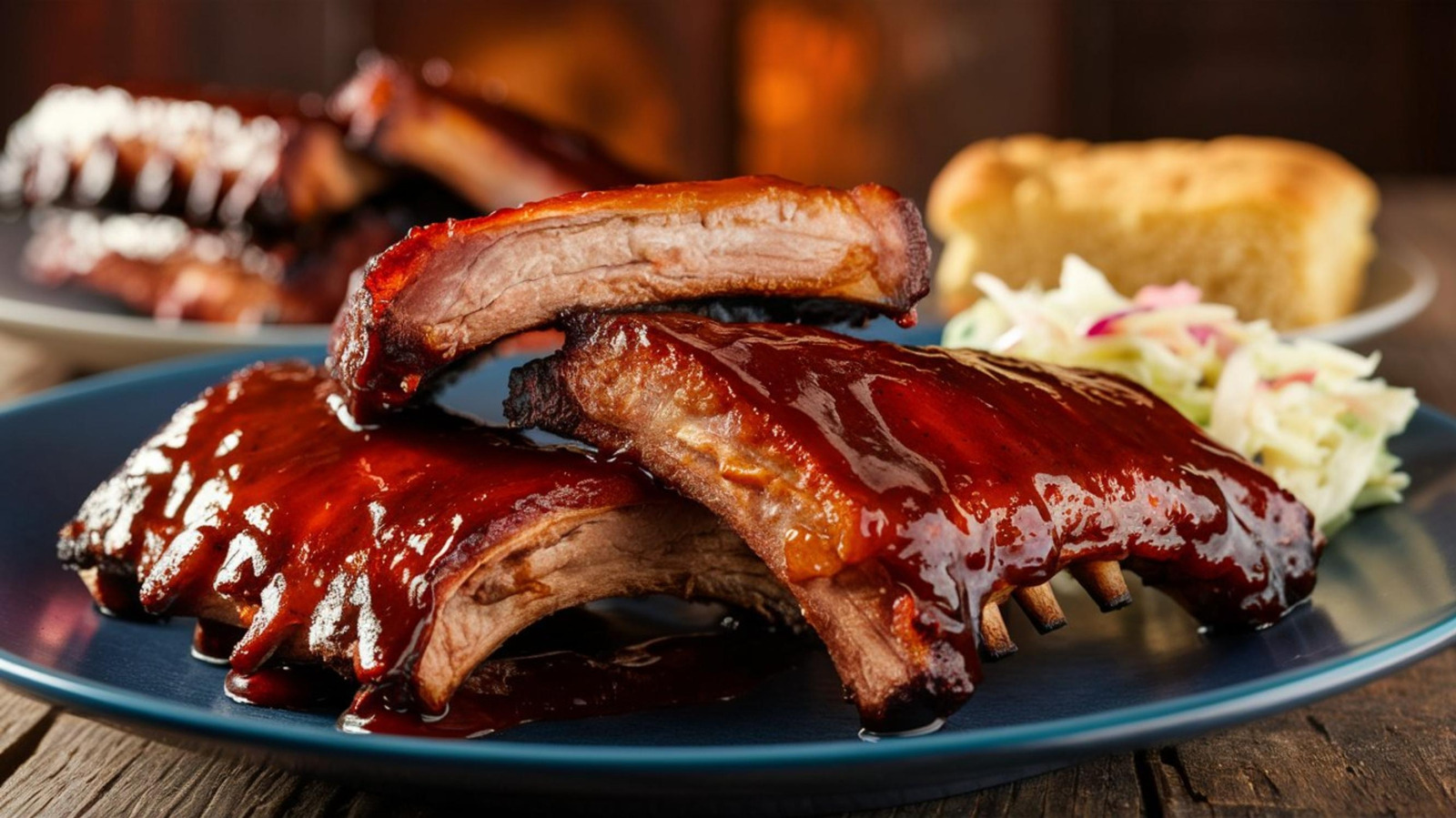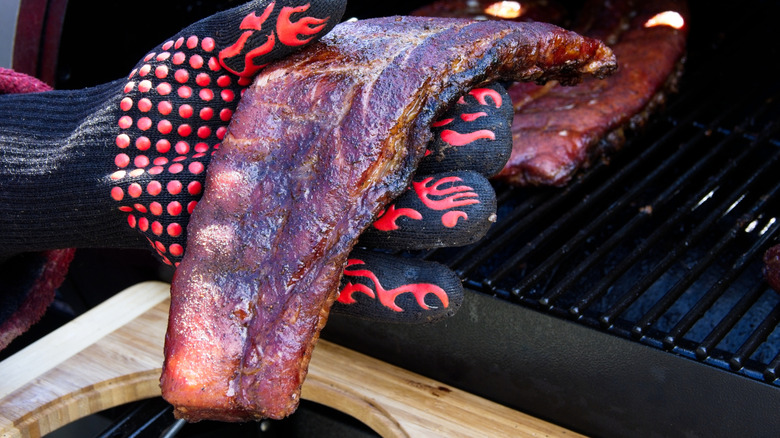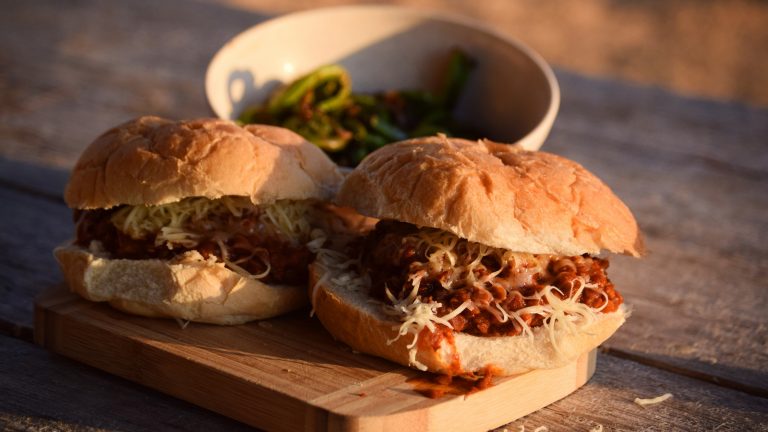While you can cook ribs in the oven, their beautiful flavor really shines through on the grill. However, you can’t just remove the silverskin and throw your rack on the grates willy-nilly. There’s a method, called the 3-2-1 rule, that serves as a guideline for cooking ribs and yields the tastiest, most tender results. Food Republic consulted with Nicole Johnson, recipe developer and outdoor cooking expert at Or Whatever You Do, on how it works.
“The 3-2-1 method breaks into three phases,” she explained. “Three hours of low-and-slow smoking to build bark and absorb smoke flavor, two hours wrapped in foil (often with a bit of liquid) to steam and tenderize, and one final hour unwrapped with sauce to firm things up and finish the glaze.” Any of these regional American barbecue sauces would be great choices for that last step.
“Each step is doing something specific,” Johnson explained. During the first phase, flavor and structure are built; during the second phase, connective tissue is broken down and fat is rendered; and finally, the third phase sets the bark and sauce. “It’s a reliable process for fall-off-the-bone ribs that still hold shape,” she said.
How to avoid common pitfalls when making ribs
The 3-2-1 method can be used as a dependable guide for cooking ribs, but there are a few common pitfalls people can make when using it. “A big one is using it on baby back ribs without adjusting the timing,” said Nicole Johnson. She elaborated that this method is designed for thicker, meatier spare ribs — not the leaner baby back ribs. If you run baby backs through a full 3-2-1, Johnson said, they can get mushy.
Another mistake, she added, is using too much liquid or wrapping the ribs too tightly during the foil phase, which can steam out all the texture you built up in the first phase. Lastly, Johnson noted, is not monitoring the meat. “Some people treat the timeline like it’s a guarantee, but every rack is a little different,” she said. She mentioned that she likes to use the “bend test” to judge when they’re ready to come off the grill. This means picking up the rib slab with a pair of tongs to see whether it can bend fairly far without breaking — that’s the sign they’re done.






